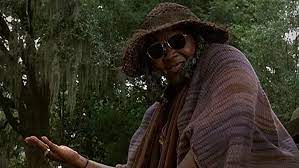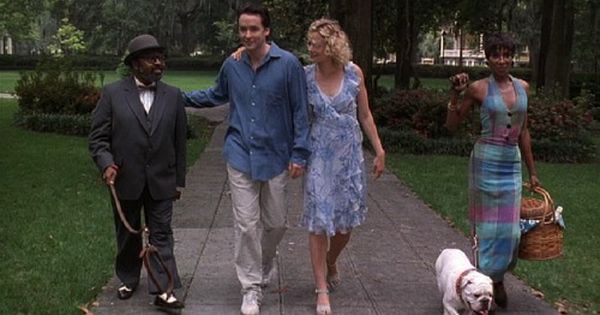If you’re planning a picnic for witches, you must feed them pork because “witches loves pork meat”—at least, this is the authoritative recommendation of Minerva, the Voodoo spiritualist in Clint Eastwood’s Midnight in the Garden of Good and Evil.
When Minerva is performing spells on behalf of Jim Williams to save him from being convicted of murder, she acts because she has been paid to do so and for the pleasure of her Voodoo. She is confident that witches must be appeased with food if spells succeed. Well-fed witches, she believes, “don’t care none for low-cal.” Whether she does the cooking or conjures it, the picnic is a huge meal of pork, rice, potatoes, black beans, lima beans, collards, and cabbage cooked in pork fat and cornbread. It’s all served picnic-style on paper plates with plastic forks. We are only told this; Eastwood doesn’t show it.

Compensating for not having a proper witches’ picnic, Eastwood ends the film with the promise of a picnic suggesting the balance between good and evil has been restored in favor of good. So as the action ends, the three principal characters, John Kelso, his girlfriend Mandy Nicholls, and a drag queen Lady Chablis set out for a day of leisure. The joke is that instead of Minerva’s pork meat, Lady Chablis has prepared a traditional picnic of “Chablis’s kickin’ chicken,” whatever that is—and the action ends before the picnic, alas.
The cast: Ida P. Hall as Minerva; Kevin Spacey as Jim Williams; John Cusack as John Kelso; Allison as Mandy Nichols; Chablis Deveau as Lady Chablis
See Clint Eastwood. Midnight in the Garden of Good and Evil (1997). Screenplay by John Lee Hancock based on John Berendt’s novel 1994; John Berendt. Midnight in the Garden of Good and Evil: A Savannah Story. New York: Random House, 1994

